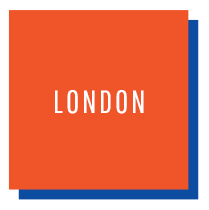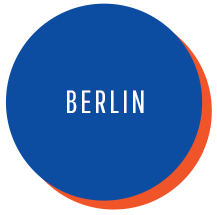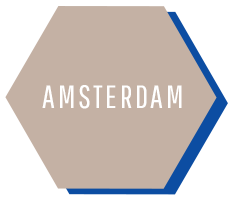THE URBAN SACRED: HOW RELIGION MAKES AND TAKES PLACE IN AMSTERDAM, BERLIN AND LONDON
by Susanne Lanwerd
Where do we find the sacred in today’s metropoles? How does religion take place in the city? And where do people locate their gods amidst the buzz of everyday urban life? The Urban Sacred investigates these questions by exploring the presence of religion in Amsterdam, Berlin and London. It shows that these cities, commonly counted among the most secularized places of the world, continue to be permeated by religion – albeit in sometimes unexpected ways.
This exhibition focuses on the things that make religion visible in Amsterdam, Berlin and London. In the highly pluralist environments of these cities, religions are not only encountered through abstract ideas but also, and probably even more so, through concrete matter. Contrary to longstanding expectations of belief retreating to the privacy of people’s homes, religion continues to take place in the public space of Western European cities today.
The Urban Sacred points to three emerging features of religious places in all three cities. First, it exposes a contrast between the inconspicuousness and visibility of religion. Attention-grabbing religious buildings from medieval cathedrals to recently built mosques represent the religious aspirations to take people out of the mundane routines of everyday life, as well as to achieve visibility in the public domain. At the same time, religious places often blend in, flowing into other aspects of everyday life and blurring the boundaries between the sacred and the profane. Even a monumental place like London’s Southwark Cathedral fades into a taken-for-granted background for people eating the lunch they bought at neighbouring Borough Market.
Second, religious places are woven into the textures of urban life. In the city's dense and sprawling topography, places of worship must relate to close and diverse neighbours. Meantime, the city is by no means impervious to religious resurgences. Religious sites spring up as new communities move in, providing visible form to the beliefs and the hopes of new inhabitants. These material manifestations of religion do not just happen to be in the city, but are born of the city.
Third, religious places have thick histories. They are inextricably linked with the social histories of the city and themselves consist of multiple layers of past uses and practices. Amsterdam, London and Berlin broadly share a long history of Jewish and Christian presence and a more recent history of Muslim presence as well as of secularization and immigration. Apart from this shared experience, the presence of religion in each of these cities is marked by specific histories, such as religious pillarization in Amsterdam and the Cold War division in Berlin.
Religious icons are both a model of social reality (by mirroring it) and a model for social reality (as an agent which evokes and directs knowledge, experiences, and actions). Thus, the project team advocate an understanding of religion that synthesizes semiotic-communicative, action-oriented, spatial and aesthetic approaches in the conceptual framework.
The contributions to this catalogue take various scholarly approaches. Steph Berns deals with the topic of the interconnection of urban mobility and/with religious activities. Daan Beekers discusses religious sites in Amsterdam that bear witness to a process of conversion and reutilization. Kim Knott has chosen a decidedly spatial approach in her research on religious symbols in the cities of Amsterdam, Berlin and London. Volkhard Krech draws on the reflections of Charles Sanders Peirce to explain how religious symbols function. Susanne Lanwerd presents the aesthetic approach that at the same time forms the basis of field research and exhibitions. Birgit Meyer focuses on the material forms religion takes. Rolf Engelbart, the only outside contributor to this catalogue, devotes himself to the deeper historical dimensions of religious sites in Berlin and discusses them from architectural, church policy, and socio-political standpoints.
The views of the photographers, presented in The Urban Sacred, help us to engage with the challenging experience of multiple perspectives on the iconic fields of our research. The artistic approach, one that for example presents details of a site in a blurring manner, differs considerably from historical analysis, from facts and figures of scholarly studies of religions as well as from results of the conducted field research, such as interviews.
The work of the photographers will not be split according to the cities and places. A separate section will be devoted to each individual artist, in order to value their specific perspectives on the iconic fields in Amsterdam, Berlin, and London; we thus intend to offer an alternative approach, allowing unattended entanglements between people, places and spaces to emerge. Spatial blocks such as „Amsterdam“, „Berlin“, „London“ are becoming diaphanously.
This exhibition would not have been possible without the support and collaboration of our partners. I extend my thanks to my colleagues in the Iconic Religion Project as well as to the contributors to this catalogue, the employees of the Centrum für Religionswissenschaftliche Studien der Ruhr Universität Bochum (Center for Religious Science Studies at Ruhr University Bochum), especially Brigitte Guthmann; our partners of the venues: in Bochum, especially Hans Günter Golinski, in London, Berlin and Amsterdam; the designer Ralf Müller von der Haegen and Janna Frenzel; the translators Alison Urban and Henning Bochert; Fritz Veitl and Nicole Warmbold of Metropol Verlag; the Federal Ministry of Education and Research, especially Christopher Wertz and – last, not least – HERA: Humanities in the European Research Area.


